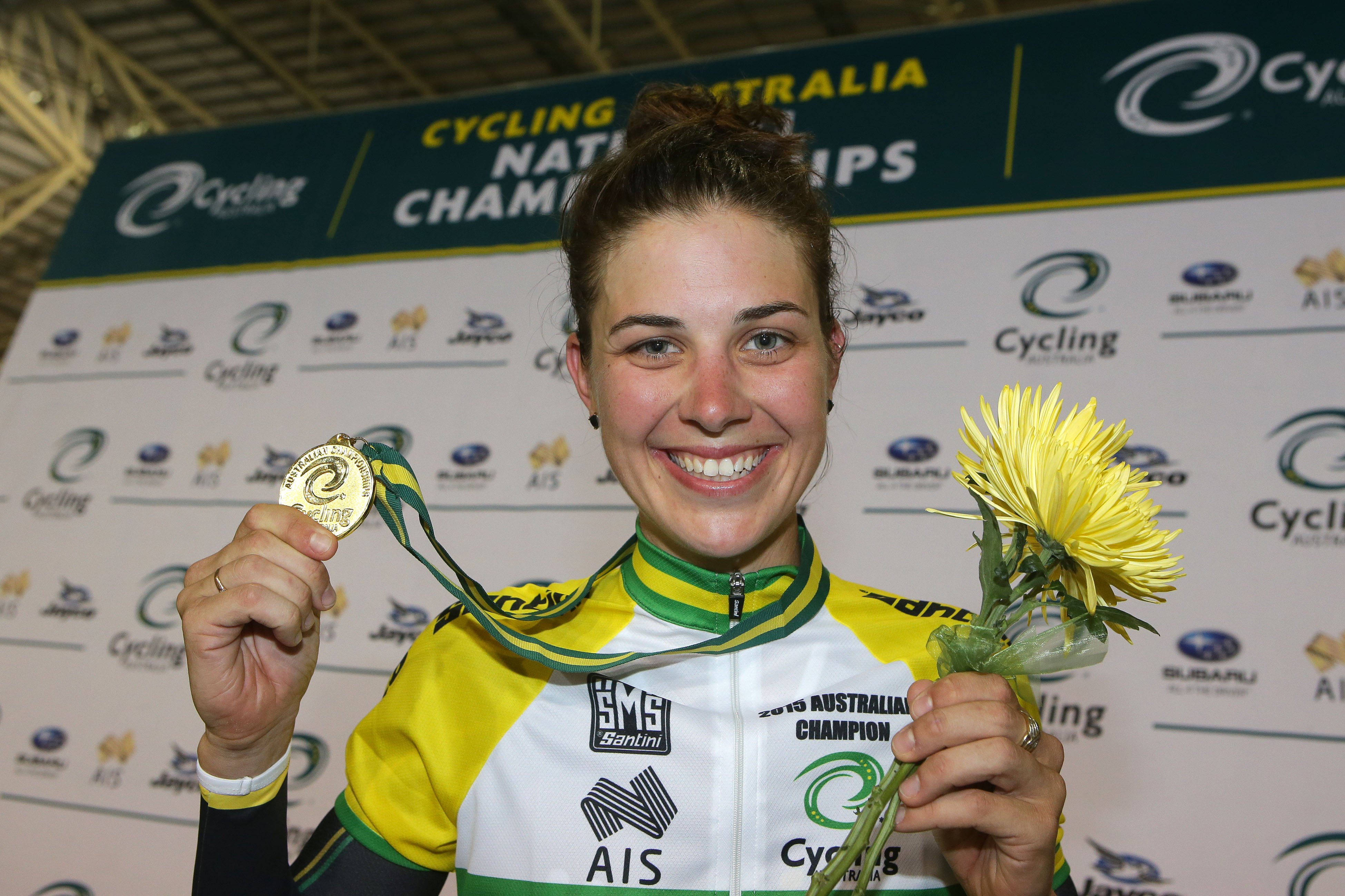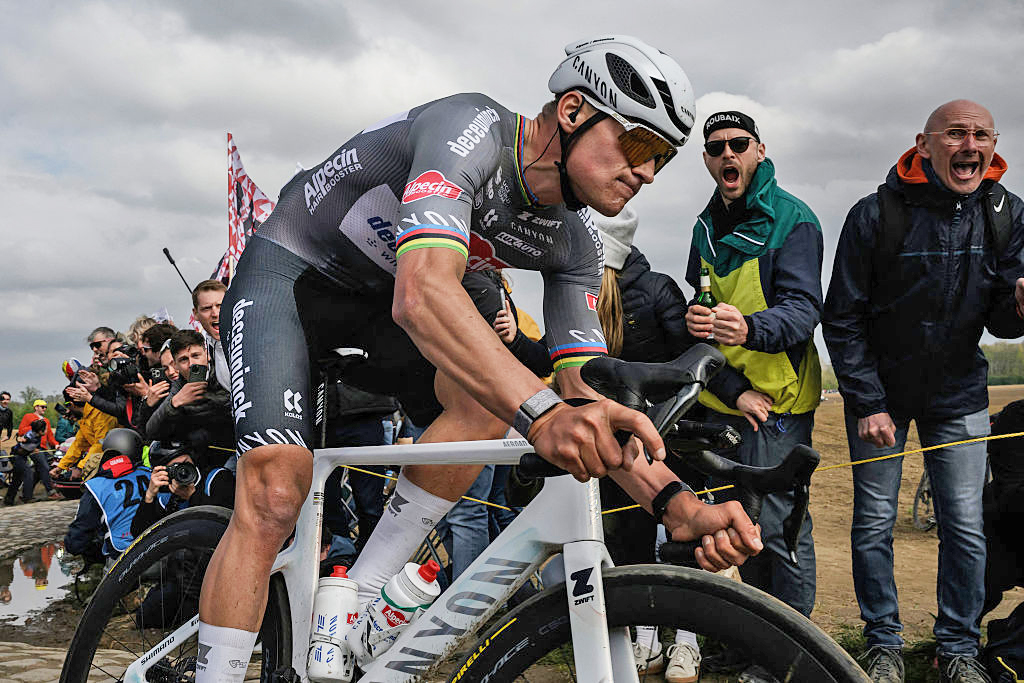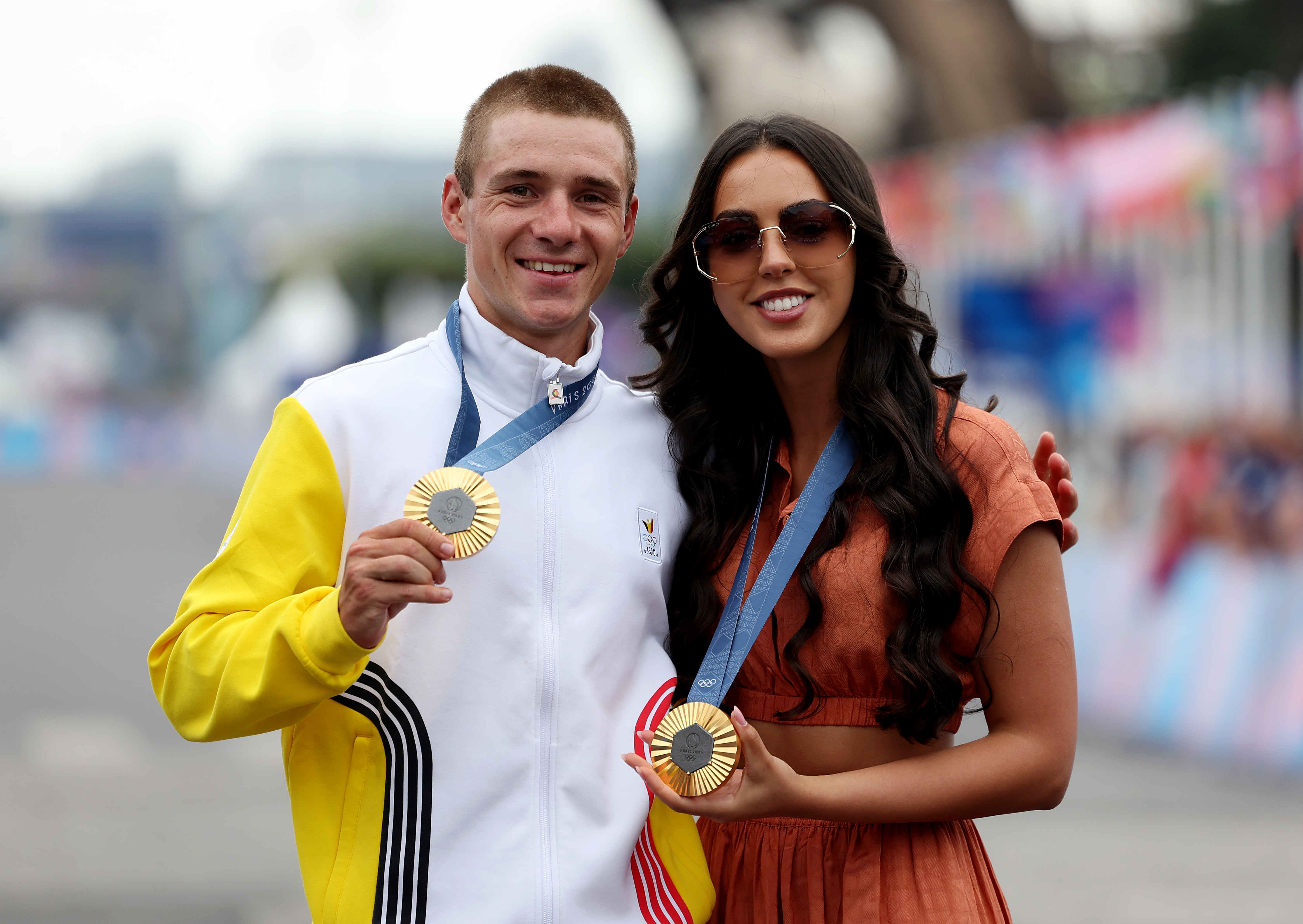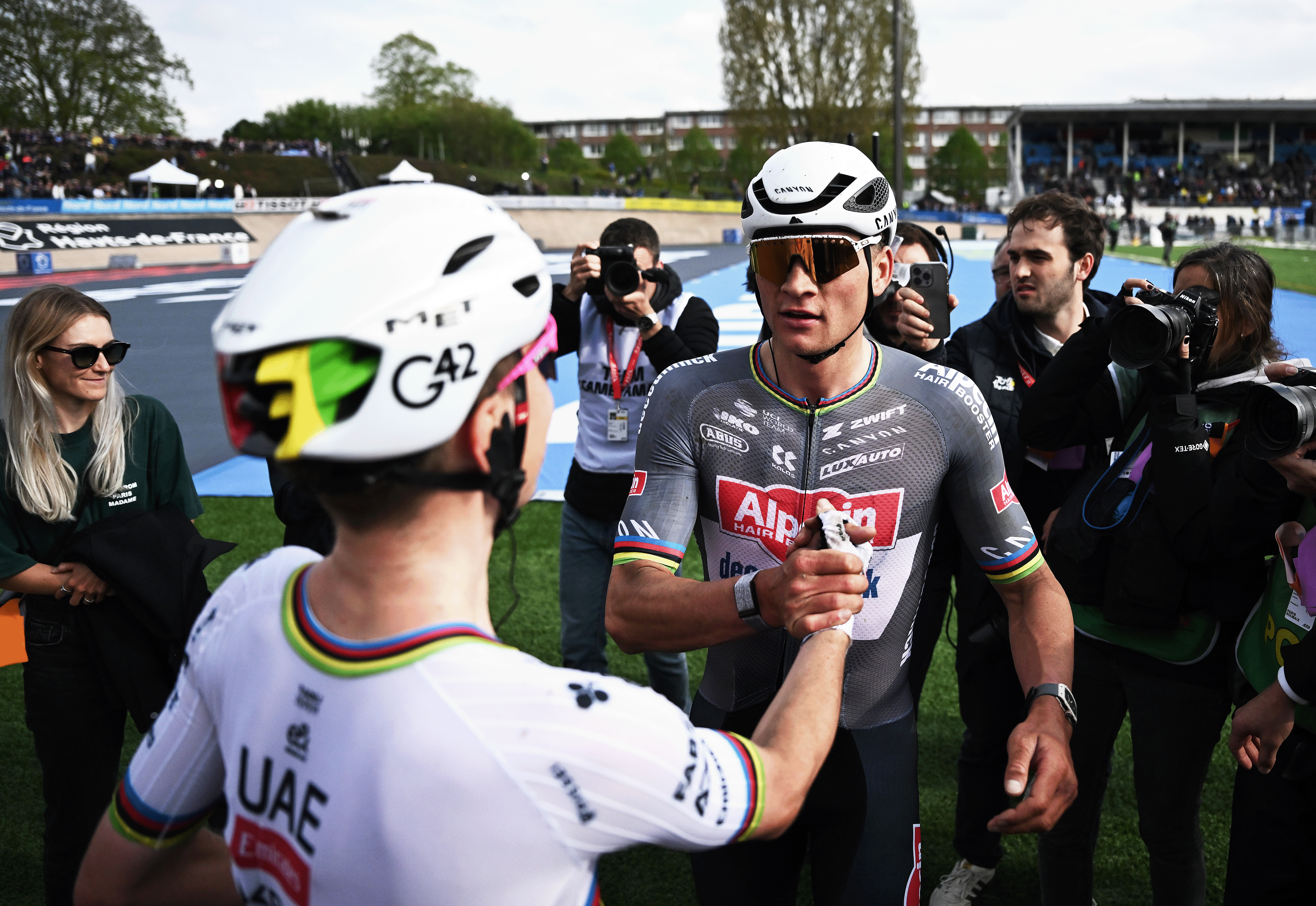Tour de France 2022 stage 12 preview - Alpe d’Huez punctuates trio of HC climbs
Peloton returns to Galibier for second consecutive day on grand finale to race’s sojourn in the Alps

Stage 12: Briançon to Alpe d'Huez
Date: July 14, 2022
Distance: 165.1km
Stage timing: 13:05 - 17:55 CEST
Stage type: Mountain
The sight of a seemingly impregnable race leader loosening his grip on the Tour de France atop the Col du Granon inevitably brought up memories of 1986 and all that, and the nostalgia continues on stage 12 to Alpe d’Huez.
A day after Greg LeMond deposed Bernard Hinault on the Granon all those years ago, the sparring pair finished arm in arm atop Alpe d’Huez. As if on cue, this year’s Tour serves up an exact replica of that route on Thursday, with the peloton facing the Col du Galibier and the Col de la Croix de Fer ahead of the final haul up the Alpe.
But while the echoes of LeMond and Hinault provide the obvious background noise, the contest between the new maillot jaune Jonas Vingegaard (Jumbo-Visma) and the deposed leader Tadej Pogačar (UAE Team Emirates) perhaps chimes more closely with other Tours past.
When the hitherto invulnerable Pogačar suddenly exposed an Achilles heel midway up the Col du Granon, one thought of Miguel Indurain’s most unexpected collapse in nearby Les Arcs in 1996. The seemingly fearless offensive carried out by Jumbo-Visma, meanwhile, seemed to come from the same reckless place as Luis Ocaña’s immortal assault on Eddy Merckx on the road to Orcières-Merlette in 1971.
In his Tour career to this point, meanwhile, Pogačar has somehow managed to mimic Merckx’s cannibalistic appetite on the bike, while simultaneously carrying himself with Indurain’s inherent gentleness off it. It remains to be seen how Pogačar will respond to this, the first setback of his reign, but the examples of Indurain and Merckx represent the two possible extremes.
In 1996, Indurain’s dramatic défaillance on Les Arcs was viewed by most observers as a temporary blip. The Spaniard’s dominance over the previous five years had been such that it was tempting, or at least logical, to write off his losses as a simple hunger flat, but the fightback never materialised. Although Indurain steadied the ship slightly in the Val d’Isère time trial the following afternoon, his challenge for a record sixth Tour would run definitively aground at Hautacam, where – in another echo of 2022 – his Danish challenger Bjarne Riis dominated.
Merckx, on the other hand, couldn’t bear to allow rumours of his demise to linger for more than 48 hours. The Tour broke for a rest day after Ocaña’s solo win at Orcières-Merlette, but when it resumed on the flat road to Marseille, Merckx flung himself immediately onto the offensive, attacking with such intensity that the stage finished two hours ahead of schedule.
The Belgian ‘only’ pegged back two minutes of Ocaña’s sizeable lead there, but the terms of engagement had been established. Whatever about Merckx’s relative strength, any doubts about his sheer force of will immediately dissipated. Two days later, Merckx would reclaim yellow when Ocaña crashed out on the Col de Menté. From there, the Tour became a procession all over again, as he eased to his third straight victory.
Stage 12 of this Tour – and perhaps the outcome of the entire race – will hinge on whether Pogačar channels Merckx or Indurain on the road to Alpe d’Huez on Thursday afternoon. In the immediate aftermath of losing yellow on the Granon, Pogačar smilingly made a point of going to congratulate Vingegaard as he warmed down, but he then issued a warning of Merckx-like frankness when he spoke to reporters shortly afterwards.
“Today I lost three minutes, maybe tomorrow I will gain three minutes. We’ll see,” said Pogačar, who dropped to third overall, 2:22 behind Vingegaard. “I’ll keep fighting until the end. It’s far from finished, the Tour.”
Whatever the reason for Pogačar’s malaise on the Granon, be it illness or a simple hunger knock, it seems improbable that the Slovenian could recover quickly enough to turn the tables on Vingegaard within 24 hours. Then again, another young talent, Jan Ullrich, had a chastening experience in these parts in 1998 only to respond with a defiant attack on the Col de la Madeleine a day later.
Vingegaard and Jumbo-Visma, meanwhile, might think to strike again while the iron is hot. The Dane revealed on Wednesday evening that he and his team had targeted stages 11 and 12 long before the Tour began, reckoning the arduous combination of climbs presented them with the perfect setting to isolate Pogačar from his team while playing to Vingegaard’s powers of endurance.
“The plan was that we wanted to put a lot of pressure on these two stages, we had reconnoitred them and prepared for them,” said Vingegaard. “We wanted to make a super hard race [on stage 11], we thought it would be in favour of me and Primož [Roglič].”
They may well be tempted to repeat the dose when the Tour treks back over the other side of the Galibier on Thursday en route to Alpe d’Huez, not least because there are indications, too, that Pogačar is less than uncomfortable in soaring temperatures of the kind expected on stage 12.
The rest of the podium contenders who finished scattered along the mountainside behind Vingegaard, on the other hand, might be grateful of some respite after a stage of rare intensity on Wednesday. In recent years, perhaps only Chris Froome’s absurd, long-range offensive on the Colle delle Finestre on the 2018 Giro d’Italia created similarly sustained chaos for GC contenders on a Grand Tour.
Men like Romain Bardet (Team DSM), second overall at 2:16, and Nairo Quintana (Arkea-Samsic), now fifth at 2:37, may be warming to the idea of finishing on the podium of this Tour after their solid displays on the Granon, but it’s hard to imagine they will be eager for a repeat of Wednesday’s day-long carnage.
Ineos Grenadiers’ leaders Geraint Thomas (fourth overall at 2:26) and Adam Yates (sixth at 3:06) might also prefer to assess the lie of the land before making a concerted attempt to move closer to the new maillot jaune Vingegaard. As the Tour heads towards cycling’s most celebrated stack of hairpin bends, all eyes will be on the rising Vingegaard and the wounded Pogačar to dictate the terms.
The route
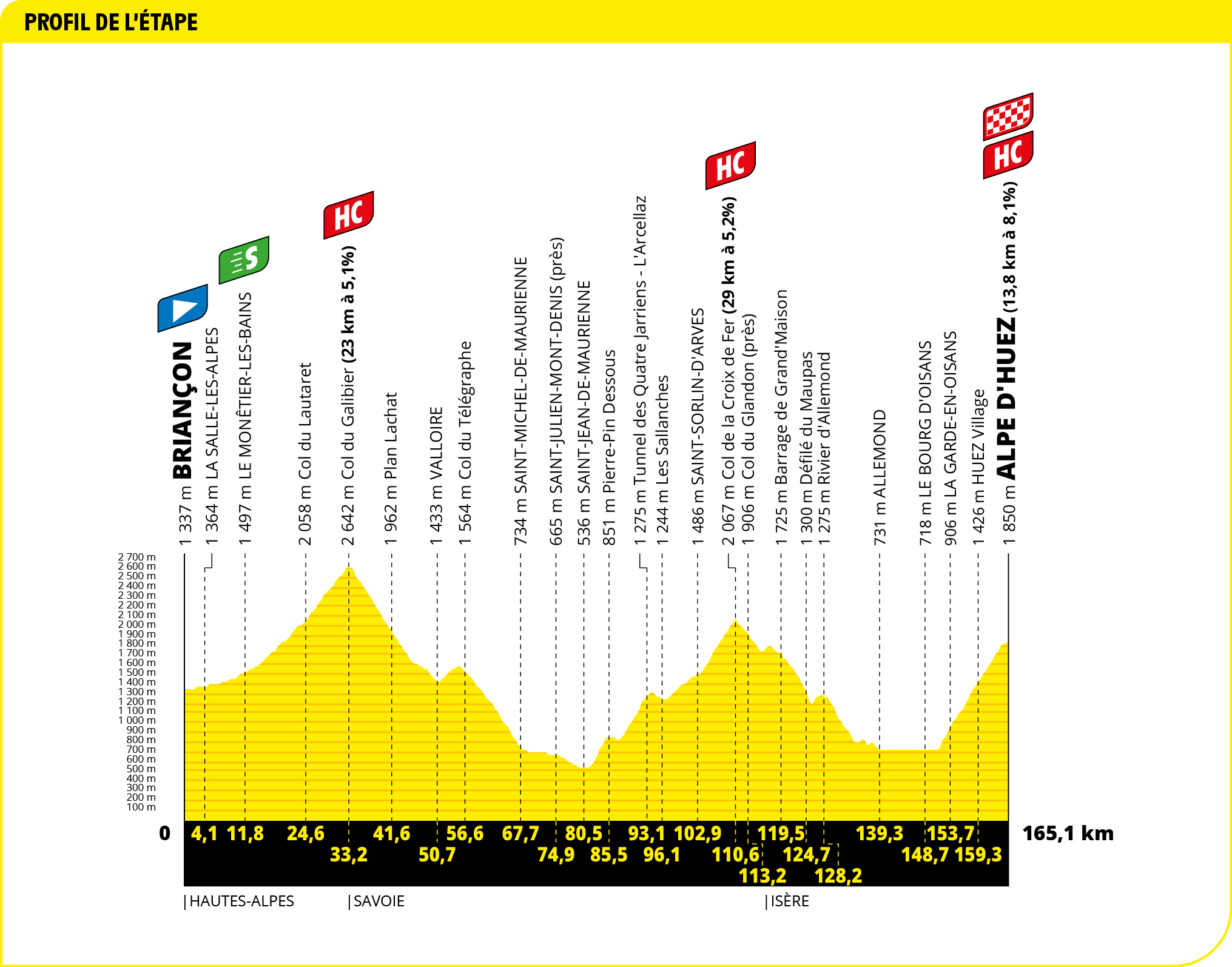
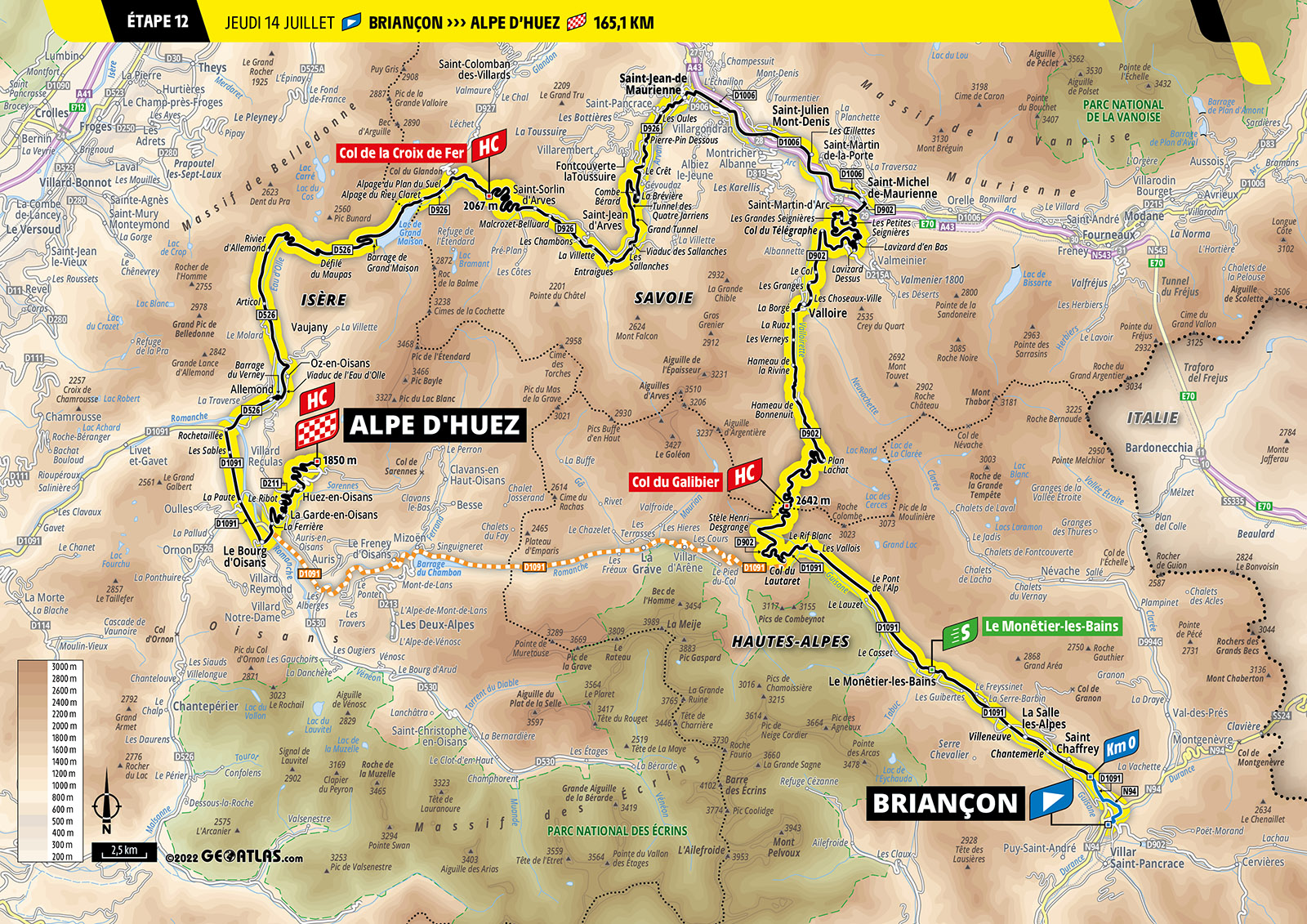
Like moths to a flame, roadside spectators will be drawn instinctively to line Alpe d’Huez, but the difficulties of the stage are not confined to its final 14km, with three hors catègorie climbs shoehorned into the stage’s 165km. The Col du Galibier (23km at 5.1%) is tackled for a second successive day, this time via the easier, Lauteret approach, while the Col de la Croix de Fer (29km at 5.2%) features ahead of the final haul up Alpe d’Huez.
The combination is both potent and familiar, given that the decision to retrace this very route is a deliberate nod to LeMond and Hinault’s two-up escape on that afternoon 36 years ago. At the Tour, the past is never past.
While LeMond and Hinault’s uneasy – and entirely false – show of unity is the indelible image from the corresponding stage in 1986, the unvarnished reality of racing over these passes was perhaps best laid bare in Paul Kimmage’s memoir Rough Ride. His account of the trepidation before the inevitable trial by fire on the Lautaret is cycling’s answer to Pliny describing smoke belching from Vesuvius. The eruption arrived shortly afterwards, with an early attack that strung out the peloton and left Kimmage among those left far behind.
There will be plenty of tired riders silently praying that the Pogačar-Vingegaard duel doesn’t reignite as early as the Galibier on stage 12. Cruelly, the road climbs almost from the start and Jumbo-Visma might be tempted to check on Pogačar’s powers of recovery long before the summit of the Galibier after 33km, even if the long descent offers a chance to stitch the race back together.
The Col de la Croix de Fer offers a similar challenge, and the rate of attrition will be high even before the race hits the base of Alpe d’Huez (13.8km at 8.1%) and the grand finale to the race’s sojourn in the Alps. The Tour’s most famous climb is neither its highest, nor its steepest, nor its most picturesque, but it is rarely less than compelling.
History, from Coppi’s triumph in 1952 to Nibali’s crash four years ago, seems to linger around every bend in the road. The hairpins provide a natural amphitheatre. This time out, the next instalment of the Vingegaard-Pogačar saga will be expected to provide the drama.
Get The Leadout Newsletter
The latest race content, interviews, features, reviews and expert buying guides, direct to your inbox!

Barry Ryan was Head of Features at Cyclingnews. He has covered professional cycling since 2010, reporting from the Tour de France, Giro d’Italia and events from Argentina to Japan. His writing has appeared in The Independent, Procycling and Cycling Plus. He is the author of The Ascent: Sean Kelly, Stephen Roche and the Rise of Irish Cycling’s Golden Generation, published by Gill Books.
Latest on Cyclingnews
-
Melissa Hoskins' death was a 'tragic accident' says victim impact statement heard in emotional court hearing, Rohan Dennis' lawyer requests suspended sentence
Judge Ian Press to sentence Dennis on May 14, 2025 -
UCI, Alpecin-Deceuninck to pursue bidon thrower 'so that such behaviour is severely punished'
Mathieu van der Poel's team: 'misbehaviour of a few individuals can have far-reaching consequences' -
'Without you, I would probably have stopped my career' – Remco Evenepoel thanks wife Oumi in emotional post ahead of return from 'dark period'
Olympic champion primed for first race since October at Friday's Brabantse Pijl after 'the hardest battle of my life so far' -
What's next for Paris-Roubaix's protagonists? – Van der Poel ends Classics campaign as Pogačar heads to favoured terrain in the Ardennes
Dutchman and world champion not set to face off again until Tour de France in July after historic trio of one-day duels
